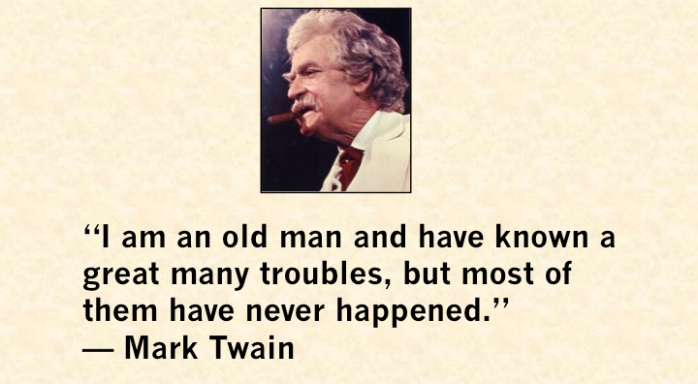Generalized Anxiety Disorder (GAD) is one of the most common forms of anxiety. It is characterized by persistent, excessive, exaggerated and chronic worry about everyday life events. Those who suffer from GAD find that they spend the majority of their day worrying about all of the “what ifs” that could occur in the near or distant future. The Center for Anxiety & Chronic Worry has developed the following metaphor concerning this condition. Picture a typical “remote control” device used for our household TV’s, DVD players, etc. Pay particular attention to the buttons labeled “fast forward”, “rewind”, “stop”, “play”, and “mute”. People who suffer from depression frequently press the “rewind” button. That is, they seem to always be replaying in their mind all of the negative events in their life which have contributed to their depressed mood states (e.g., “the horrible manner in which my stepdad treated me”, “the unfair manner in which I was treated by my teachers in school”, “my friends always betrayed me”, etc.). In other words, their thoughts are consumed with the past. Those with chronic worry, keep pressing the fast forward button. Unfortunately, what they see during this screening are all of the future events that will no doubt go wrong (e,g, “The job interview will not go well”, “The airline will loose my luggage during my trip next week”,
“ I will surely run out of money before the end of the year”, “Important relationships I have will soon end”, "I will end up alone", etc.). Generalized Anxiety Disorder affects approximately 7 million people, and women are more then twice as likely to be diagnosed with this form of anxiety, in comparison to men. Physical symptoms can include muscle tension, fatigue, sleep difficulties, irritability, edginess, and stomach upset.
The Center for Anxiety & Chronic Worry, located in Incline Village, NV. (Lake Tahoe), provides a short-term Cognitive-Behavior Therapy (CBT) program designed to help the person with GAD to learn to press the “stop” button, such that their negative thought patterns are replaced with more realistic appraisals of everyday situational demands (present and future). In adddition, patients to learn to press the “pause” button on their emotional remote control in a way that helps them to learn to pause for a moment to "think about how they think", and to then ask themselves if they notice any particular pattern? Do they tend to "jump to conclusions", think in an "all or none"/"black & white" manner, etc.? In other words, I stress the importance of questioning one's typical, automatic ways of thinking, and to make a habit of asking..."is it possible that my interpretation of this situation may be incorrect? Might there be another way of viewing what just occurred? The bottom line is simply this; sometimes we all need to change the lens through which we interpret our day-to-day experiences. Is it time to change YOUR frame of reference? Hit the pause button, and think about it. For more information on Generalized Anxiety Disorder, please visit the Obsessive-Compulsive Foundation and the Anxiety & Depression Assocation of America web sites.
GENERALIZED ANXIETY DISORDER
CENTER FOR ANXIETY & CHRONIC WORRY
937 Tahoe Blvd. Ste. 205
Incline Village, NV. 89451
Phone: 775.831.2436
Copyright © 2014-2021: Center for Anxiety & Chronic Worry
All rights reserved: Barry C. Barmann, Ph.D.
937 Tahoe Blvd. Ste. 205 Incline Village, NV. 89451
Tel. 775.831.2436

